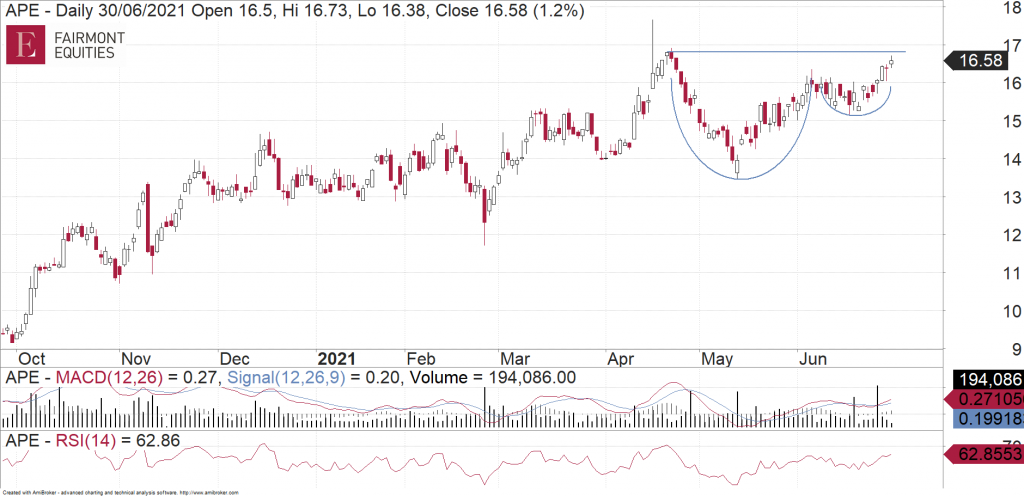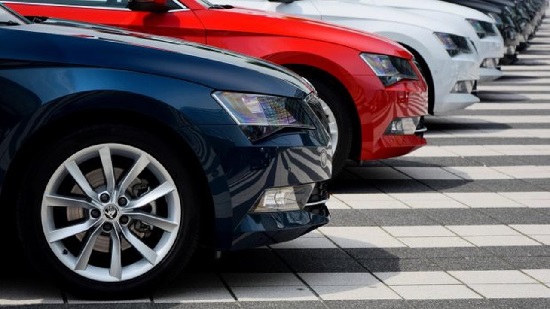Following its merger with ASX-listed peer Automotive Holdings Group (AHG) in August 2019, Eagers Automotive (ASX:APE) is now the dominant player in the automotive retail market in Australia. They now have more than 11% market share of the new vehicle sales market.
APE shares have benefitted from a surge in new car sales that has coincided with supply shortages. Following several market updates, we decided to research the Company’s fundamentals. With the favourable demand-supply balance set to normalise, can the Company continue to drive earnings growth?
About Eagers Automotive
The merged group consists of the ownership and operation of motor vehicle dealerships. They provide full facilities including the sale of new and used vehicles, service, parts, and the facilitation of allied consumer finance. The Company now has 205 new car dealerships across 31 brands and 68 truck & bus dealerships across 12 brands in Australia. APE also has a key presence in NZ with a ~8% share of new vehicle sales through 13 car dealerships across six brands.
Key Fundamental Drivers
A Favourable Demand-Supply Balance
The Company is currently benefiting from industry tailwinds, with demand continuing to outstrip supply. On the demand side, the strong rebound in new car sales, after a run of 31 consecutive monthly declines from March 2018 to October 2020, has continued. May 2021 was the 7th consecutive month of growth.
Demand over the next 12-24 months is expected to continue to be supported by:
• International borders remaining closed,
• Increasing wealth effect, as evidenced by factors such as accelerating house and strong equity markets,
• The decision by the Federal government in the May Budget to extend the Full Expensing Measure (FEM) stimulus by 12 months, to June 2023 is expected to continue to support demand for new vehicles. Notably, light commercial vehicle sales, which comprised of ~20% of total sales pre-COVID-19, has been trending higher since the introduction of the full expensing measure, which is likely linked to the FEM.
On the other hand, supply has been impacted by disrupted auto parts chains and original equipment manufacturers (OEMs) structurally reducing their capacity and/or closing uneconomic factories. These are a result of COVID-19. Shortages in global semiconductor chips have continued to accentuate the ongoing supply issues.
While recent monthly data is showing early indications that supply is beginning to recover in key automotive manufacturing nations, supply does however remain down ~10-30% on a 12-month rolling basis (excluding China).
As a result, constrained OEM supply is driving APE’s gross profit margin for new vehicles higher. This trend is expected to continue for the remainder of FY21 and into FY22. Notably, the Company commented at the FY20 result in February that it could take 2-3 years for inventory positions to return to prior levels.
Ability to Mitigate Margin Impact Once Supply Stabilises
With the supply-side issues expected to normalise at some stage, a key factor to consider is the timing and extent of any tapering in gross profit margin. The eventual decline in gross profit margin, which is expected in FY22, will flow through to margin at the operating level, with EBITDA margin likely to taper in FY22. However, the impact may be mitigated by several factors, some of which include:
i. Some vehicle models/makes will see a normalisation of supply later than others. This is significant as APE has an exposure to around 12 brands.
ii. While Property is a minor contributor to group earnings (on a Profit Before Tax basis), there is potential for further rationalisation of the property portfolio, as well a property purchases, both of which support operating margin.
iii. The rationalisation in the number of property sites – driven by both divestments of non-core/underperforming businesses and part of property acquisitions (i.e. removing overlapping sites) – has the potential to deliver a structural reduction in the operating cost base (i.e. staff, rent & other costs) without impacting sales volumes. The main area of cost saving is likely to come from staff reductions, which are estimated to account for ~50% of gross profit, as opposed to rental costs, which are estimated to account for only ~10% of gross profit.
Strong Balance Sheet Supports Acquisition Strategy
While the Company has historically used its balance sheet to focus on organic growth opportunities, APE is now is a position to pursue multiple acquisition opportunities, including both dealer and property acquisitions. With OEM’s still in the process of adjusting manufacturing capacity, re-positioning their business models, APE is well placed to participate in industry consolidation, which would accelerate its market leadership position.
Company commentary at its recent AGM update in May 2021, indicated that acquisition opportunities over the short-to-medium term are likely, with APE noting that it is “extremely well capitalised”. APE is likely to target the Sydney and Melbourne markets, where the Company’s market share is relatively lower than its national average (9.9% in NSW and ~5% in Victoria).
As noted above, further acquisitions are likely to be well received by the market, given the Company’s successful track record in this area and the potential for acquisitions to support margin as the current supply constraints ease.
Fundamental View
APE is currently trading on a 1-year forward P/E multiple of ~19x. This is slightly above the 5-year average but below the levels seen while APE traded as a merged entity. We see a couple of catalysts for the shares over the medium term:
i. The increasing likelihood of acquisitions over the short term, which combined with rationalisation of the property portfolio, should lead to further market share gains;
ii. Consensus EPS estimates for FY22 factor in a 14% decline, reflecting a reversion in gross profit margin as supply constraints normalise. We consider this to be too punitive, noting that demand drivers remain strong and the Company has a number of avenues to support margins at the operating level (as discussed above).
Charting View
APE continues to trend higher and at the moment there are no warning signs that this could be under threat. However, from the point of view of finding an entry point, we need to bear in mind where the nearest support and resistance levels are. With the old low near $14 and the previous peak near $16.80, APE is closer to resistance than support. This means that we either need to wait for an upside break through resistance or wait for it to dip back closer to $14. However, price action since the end of April is starting to resemble that of a “cup and handle”. This means that there is a good chance that we do see an upside break soon. If that were to occur, then that would be a clear buy signal and result in a swift move higher for APE.

Michael Gable is managing director of Fairmont Equities.
Current share prices available here.
You can learn more about technical analysis in this article.
An 8-week FREE TRIAL to The Dynamic Investor can be found HERE.
Would you like us to call you when we have a great idea? Check out our services.
Disclaimer: The information in this article is general advice only. Read our full disclaimer HERE.
Like this article? Share it now on Facebook and Twitter!

